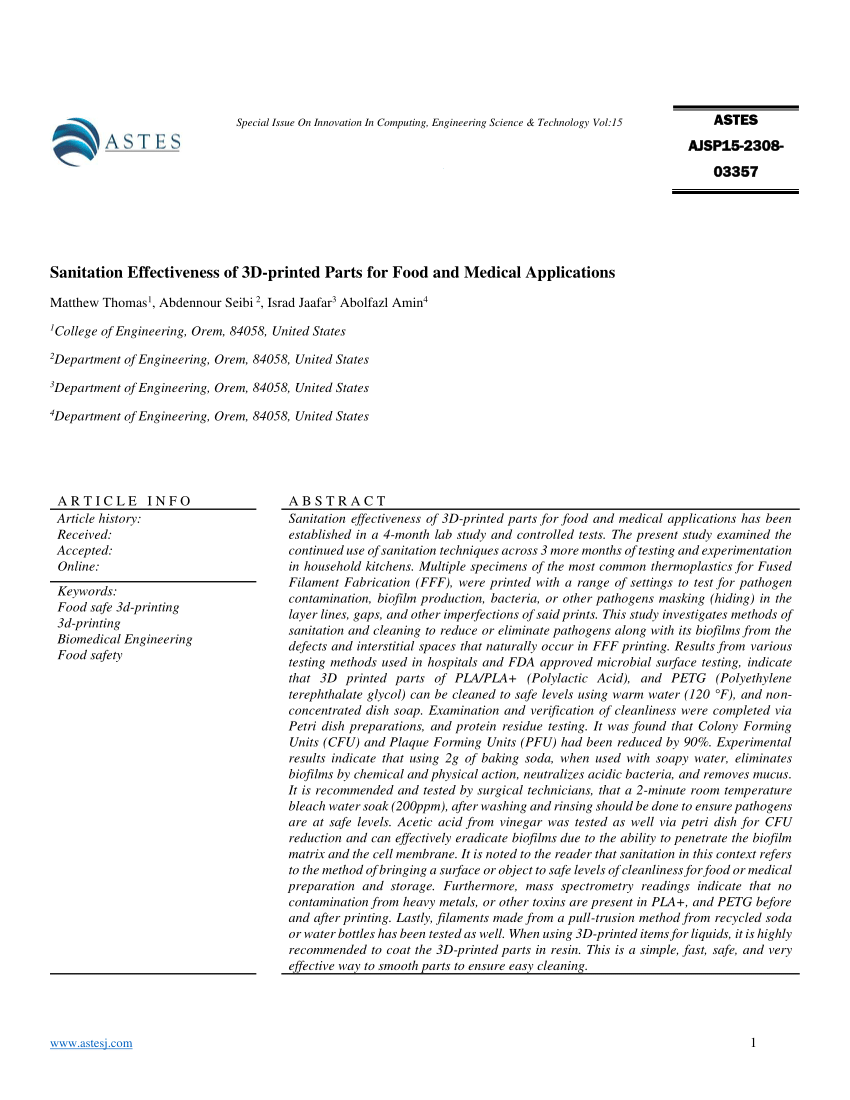Abstract
Sanitation effectiveness of 3D-printed parts for food and medical applications has been established in a 4-month lab study and controlled tests. The present study examined the continued use of sanitation techniques across 3 more months of testing and experimentation in household kitchens. Multiple specimens of the most common thermoplastics for Fused Filament Fabrication (FFF), were printed with a range of settings to test for pathogen contamination, biofilm production, bacteria, or other pathogens masking (hiding) in the layer lines, gaps, and other imperfections of said prints. This study investigates methods of sanitation and cleaning to reduce or eliminate pathogens along with its biofilms from the defects and interstitial spaces that naturally occur in FFF printing. Results from various testing methods used in hospitals and FDA approved microbial surface testing, indicate that 3D printed parts of PLA/PLA+ (Polylactic Acid), and PETG (Polyethylene terephthalate glycol) can be cleaned to safe levels using warm water (120 °F), and non-concentrated dish soap. Examination and verification of cleanliness were completed via Petri dish preparations, and protein residue testing. It was found that Colony Forming Units (CFU) and Plaque Forming Units (PFU) had been reduced by 90%. Experimental results indicate that using 2g of baking soda, when used with soapy water, eliminates biofilms by chemical and physical action, neutralizes acidic bacteria, and removes mucus. It is recommended and tested by surgical technicians, that a 2-minute room temperature bleach water soak (200ppm), after washing and rinsing should be done to ensure pathogens are at safe levels. Acetic acid from vinegar was tested as well via petri dish for CFU reduction and can effectively eradicate biofilms due to the ability to penetrate the biofilm matrix and the cell membrane. It is noted to the reader that sanitation in this context refers to the method of bringing a surface or object to safe levels of cleanliness for food or medical preparation and storage. Furthermore, mass spectrometry readings indicate that no contamination from heavy metals, or other toxins are present in PLA+, and PETG before and after printing. Lastly, filaments made from a pull-trusion method from recycled soda or water bottles has been tested as well. When using 3D-printed items for liquids, it is highly recommended to coat the 3D-printed parts in resin. This is a simple, fast, safe, and very effective way to smooth parts to ensure easy cleaning.



Just want to say, good on you for bothering to sum up your stance. Comments little this are why I use this format for information…I still have my skepticism of plastics, but clearly you’ve done some petg 3d printing and thought it through